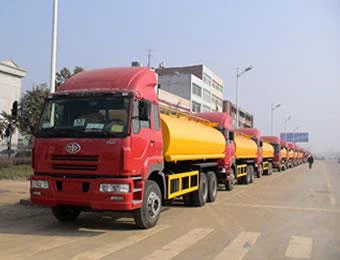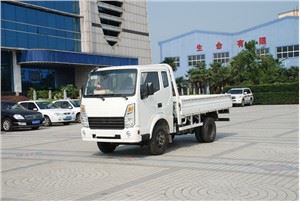The Ultimate Guide to Delivery Trucks: Types, Uses, and Best Practices

In the ever-evolving world of logistics and transportation, delivery trucks play a crucial role in ensuring goods reach their destinations efficiently. This comprehensive guide delves into everything you need to know about delivery trucks—including their types, applications, and best practices for effective use.
What Are Delivery Trucks?
Delivery trucks are specialized vehicles designed for transporting goods from one location to another. They vary in size, payload capacity, and design to meet different transportation needs. Commonly used in e-commerce, retail, and grocery, these trucks are essential for everyday business operations.
Types of Delivery Trucks
1. Box Trucks
Box trucks, also known as cube vans, feature a distinct box-shaped cargo area. They are commonly used by moving companies and for home deliveries. Box trucks come in various sizes, typically ranging from 10 to 26 feet in length.
2. Cargo Vans
Cargo vans are smaller delivery trucks that have an enclosed cargo area. They are ideal for transporting smaller goods and are often used by small businesses or tradespeople for local deliveries.
3. Flatbed Trucks
Flatbed trucks have a flat, open cargo area without sides or a roof. They are perfect for transporting larger, bulky items such as construction materials or machinery. Securing the load is essential when using flatbeds.
4. Refrigerated Trucks
Refrigerated trucks, or reefer trucks, are equipped with cooling units to transport perishable goods. They are critical for businesses dealing in food and pharmaceuticals, ensuring products remain fresh throughout transportation.
5. Pickup Trucks
Pickup trucks, while smaller, are versatile and can handle various delivery tasks. They are popular among local businesses and contractors needing to transport tools and materials.
Applications of Delivery Trucks
1. E-commerce Deliveries
With the rise of online shopping, delivery trucks are vital for the logistics of e-commerce. They transport packages from fulfillment centers to customers’ doorsteps.
2. Grocery Deliveries
Many grocery stores offer delivery services, requiring specialized trucks to deliver perishable items quickly and efficiently.

3. Moving Services
Moving companies rely heavily on box trucks and cargo vans to transport personal belongings from one location to another.
4. Construction and Landscaping
Flatbed trucks are commonly used in construction and landscaping to transport heavy materials, equipment, and tools to job sites.
Choosing the Right Delivery Truck
1. Determine Your Needs
Before selecting a delivery truck, assess the volume and type of goods you need to transport. Consider weight, size, and whether climate control is necessary.
2. Evaluate Budget and Cost of Operation
Beyond the initial cost, evaluate ongoing expenses such as fuel, insurance, and maintenance to ensure your choice aligns with your budget.
3. Think About Future Growth

Choose a delivery truck that can accommodate potential growth or changes in delivery requirements. Opting for more capacity now might save costs in the long run.
Best Practices for Operating Delivery Trucks
1. Regular Maintenance
Ensure your trucks are maintained for safe operations. Schedule regular inspections, oil changes, and necessary repairs.
2. Train Drivers
Invest in driver training programs focusing on safety, efficiency, and customer service to improve overall operations.
3. Use Route Optimization Tools
Implement software or apps that can help optimize routes, reduce fuel consumption, and shorten delivery times.
Environmental Considerations
1. Fuel-Efficient Models
When choosing a delivery truck, consider investing in fuel-efficient or alternative fuel models to reduce carbon footprints.
2. Regular Emissions Testing
Stay compliant with local regulations by ensuring regular emissions testing and maintenance of your delivery fleet.
Technological Advancements in Delivery Trucks
1. Telematics
Telematics systems provide real-time data on vehicle location, speed, and fuel consumption, enabling better management of delivery operations.
2. Electric Delivery Trucks
Electric delivery trucks are becoming more common as companies strive to reduce emissions and operational costs while maintaining efficiency.
3. Autonomous Vehicles
While still in development, autonomous delivery trucks promise to revolutionize the logistics industry by reducing labor costs and improving efficiency.
Cost Analysis of Delivery Trucks
Understanding the costs associated with delivery trucks is crucial for business planning. Below is a simplified table detailing potential costs to consider.
| Cost Type | Estimation Range |
|---|---|
| Purchase Price | $25,000 – $60,000 |
| Maintenance | $1,000 – $3,500 annually |
| Fuel | $2,000 – $4,500 annually |
| Insurance | $1,500 – $3,000 annually |
| Registration | $100 – $300 annually |
Frequently Asked Questions About Delivery Trucks
1. What types of delivery trucks are best for e-commerce businesses?
Box trucks and cargo vans are ideal for e-commerce businesses due to their size and versatility.
2. How do I choose the right size delivery truck?
Assess the volume of goods you need to transport and choose a size that can accommodate your needs without exceeding payload limits.
3. Are electric delivery trucks worth the investment?

Electric delivery trucks can offer lower fuel and maintenance costs, making them a worthwhile investment for many businesses.
4. How important is driver training for delivery operations?
Driver training is essential for ensuring safe operations, reducing accidents, and improving customer service.
5. What maintenance should I perform on my delivery truck?
Regular oil changes, tire inspections, brake checks, and overall vehicle performance assessments are vital for maintaining delivery trucks.
6. Can I modify my delivery truck for my specific needs?
Yes, many trucks can be customized with shelves, partitions, or specialized equipment to better suit specific delivery requirements.
